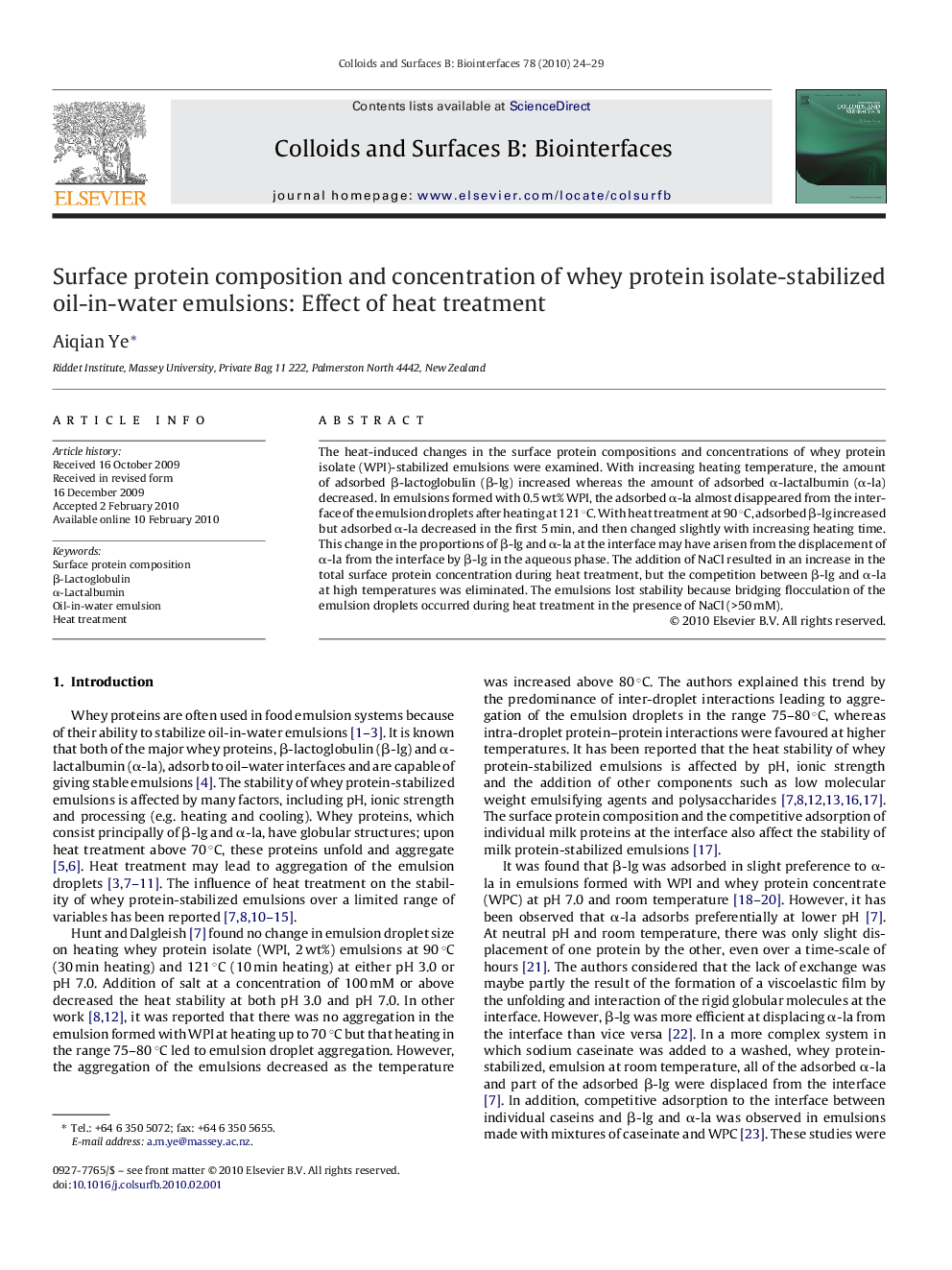| Article ID | Journal | Published Year | Pages | File Type |
|---|---|---|---|---|
| 601371 | Colloids and Surfaces B: Biointerfaces | 2010 | 6 Pages |
The heat-induced changes in the surface protein compositions and concentrations of whey protein isolate (WPI)-stabilized emulsions were examined. With increasing heating temperature, the amount of adsorbed β-lactoglobulin (β-lg) increased whereas the amount of adsorbed α-lactalbumin (α-la) decreased. In emulsions formed with 0.5 wt% WPI, the adsorbed α-la almost disappeared from the interface of the emulsion droplets after heating at 121 °C. With heat treatment at 90 °C, adsorbed β-lg increased but adsorbed α-la decreased in the first 5 min, and then changed slightly with increasing heating time. This change in the proportions of β-lg and α-la at the interface may have arisen from the displacement of α-la from the interface by β-lg in the aqueous phase. The addition of NaCl resulted in an increase in the total surface protein concentration during heat treatment, but the competition between β-lg and α-la at high temperatures was eliminated. The emulsions lost stability because bridging flocculation of the emulsion droplets occurred during heat treatment in the presence of NaCl (>50 mM).
